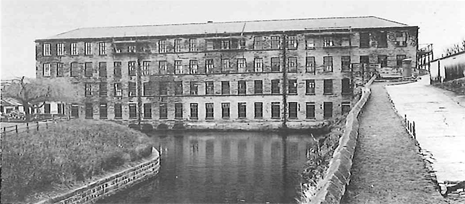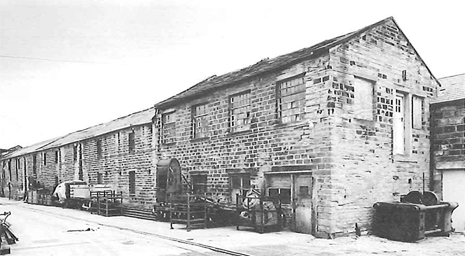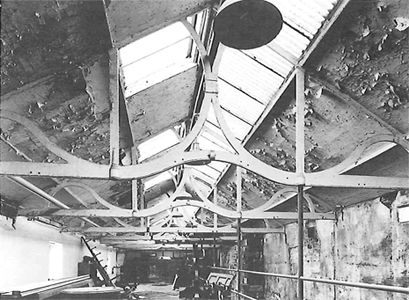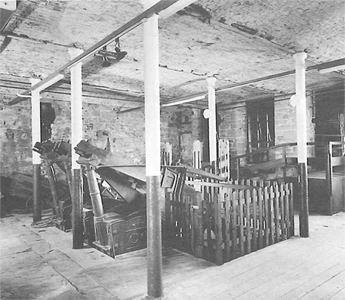Armley Mills
Yorkshire > West Yorkshire > Armley > Armley Mills
Basic information
- Name
- Armley Mills.
- Township
- Armley.
- Civil Parish
- Leeds.
- Country
- West Yorkshire.
- Type of record
- B.
- NMRfn
- 63320.
- NGR
- SE 2758 3417.
- UTM
- 53.80310283, -1.582715956
Description
Established in 16th century as water-powered fulling mill, later working as both fulling and corn mill. Rebuilt 1788 reputedly as the largest fulling mill in the world but only about 44 metres long and of three storeys. Operated as public scribbling, carding and fulling mill before destruction by fire in 1805. Rebuilt 1805-7 on much larger scale (four storeys, twenty-three bays) by Benjamin Gott as fireproof mill, the earliest known such structure in the woollen branch and the oldest surviving Yorkshire example of the type in all branches; the mill has inverted T-section cast-iron beams, cylindrical cast-iron columns and brick arches. Other buildings include early 19th century heated cloth dryhouse of two storeys roofed with elaborate cast-iron trusses, remains of a gas-making plant, and housing for the mill tenant. Steam power added c1860.
Ortophotographic map
Aerial photographic view of Armley Mills (Armley, West Yorkshire).
No comments yet
Get the conversation started by leaving the first comment on Armley Mills using the specific Armley Mills comment form.
Yorkshire textile mills, 2010-26. This site is kindly hosted by Cédula de habitabilidad.



